Obesity is associated with lower levels of negative emotions in polycystic ovary syndrome in clinical and animal studies
- PMID: 38956857
- PMCID: PMC11225633
- DOI: 10.1080/07853890.2024.2373199
Obesity is associated with lower levels of negative emotions in polycystic ovary syndrome in clinical and animal studies
Abstract
Background: Polycystic ovary syndrome (PCOS) is one of the most common endocrine and metabolic disorders in women of reproductive age. It is frequently comorbid with obesity and negative emotions. Currently, there are few reports on the relationship between obesity and negative emotions in patients with PCOS. Here we performed both basic and clinical studies to study the relationship between obesity and negative emotions in PCOS.
Methods: We performed a cross-sectional study including 608 patients with PCOS and 184 healthy participants to assess the mental health status of people with different body mass indices (BMI). Self-rated anxiety, depression, and perceived stress scales were used for subjective mood evaluations. Rat PCOS models fed 45 and 60% high-fat diets were used to confirm the results of the clinical study. Elevated plus maze and open field tests were used to assess anxiety- and depression-like behaviors in rats.
Results: We observed overweight/obesity, increased depression, anxiety, and perceived stress in women with PCOS, and found that anxiety and depression were negatively correlated with BMI in patients with severe obesity and PCOS. Similar results were confirmed in the animal study; the elevated plus maze test and open field test demonstrated that only 60% of high fat diet-induced obesity partly reversed anxiety- and depression-like behaviors in PCOS rats. A high-fat diet also modulated rat hypothalamic and hippocampal luteinizing hormone and testosterone levels.
Conclusion: These results reveal a potential relationship between obesity and negative emotions in PCOS and prompt further investigation. The interactions between various symptoms of PCOS may be targeted to improve the overall well-being of patients.
Keywords: Obesity; luteinizing hormone; negative emotion; polycystic ovary syndrome; testosterone.
Plain language summary
Obesity was negatively correlated with negative emotions in patients with PCOS.Obesity may affect the downregulation of LH and testosterone and participate in the regulation of emotions.Increased BMI may be beneficial for patients with PCOS in terms of the psychological aspects.
Conflict of interest statement
No potential conflict of interest was reported by the author(s).
Figures

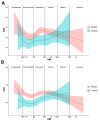
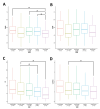
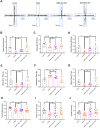
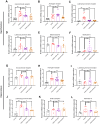
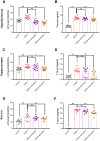
Similar articles
-
Relationship between smoking, excessive androgen and negative emotions in women with polycystic ovary syndrome (PCOS).J Ovarian Res. 2024 Oct 29;17(1):211. doi: 10.1186/s13048-024-01541-x. J Ovarian Res. 2024. PMID: 39472904 Free PMC article.
-
Body image and its relationships with sexual functioning, anxiety, and depression in women with polycystic ovary syndrome.J Affect Disord. 2019 Jun 15;253:385-393. doi: 10.1016/j.jad.2019.05.006. Epub 2019 May 6. J Affect Disord. 2019. PMID: 31082731
-
Diet-induced obesity exacerbates metabolic and behavioral effects of polycystic ovary syndrome in a rodent model.Am J Physiol Endocrinol Metab. 2015 Jun 15;308(12):E1076-84. doi: 10.1152/ajpendo.00182.2014. Epub 2015 Apr 14. Am J Physiol Endocrinol Metab. 2015. PMID: 26078189 Free PMC article.
-
Polycystic ovary syndrome and its multidimensional impacts on women's mental health: A narrative review.Medicine (Baltimore). 2024 Jun 21;103(25):e38647. doi: 10.1097/MD.0000000000038647. Medicine (Baltimore). 2024. PMID: 38905372 Free PMC article. Review.
-
Depression and Anxiety in Polycystic Ovary Syndrome: Etiology and Treatment.Curr Psychiatry Rep. 2017 Sep 20;19(11):83. doi: 10.1007/s11920-017-0834-2. Curr Psychiatry Rep. 2017. PMID: 28929349 Review.
Cited by
-
Quinoa ameliorates polycystic ovary syndrome via regulating gut microbiota through PI3K/AKT/mTOR pathway and autophagy.Nutr Metab (Lond). 2024 Oct 11;21(1):80. doi: 10.1186/s12986-024-00855-3. Nutr Metab (Lond). 2024. PMID: 39394588 Free PMC article.
References
MeSH terms
LinkOut - more resources
Full Text Sources
Other Literature Sources
Medical
